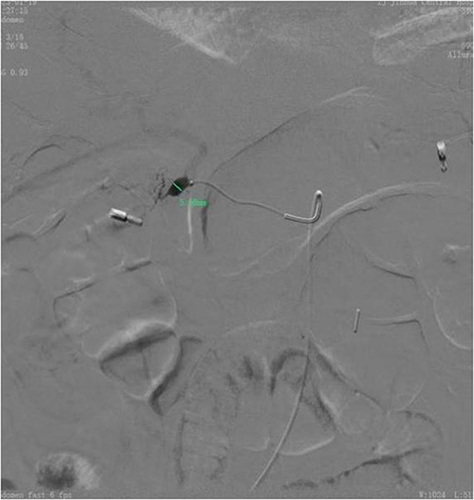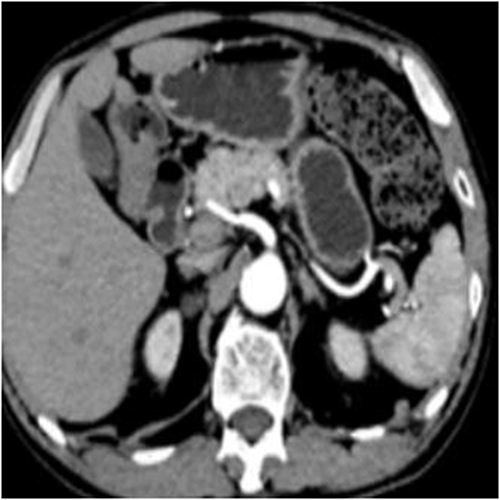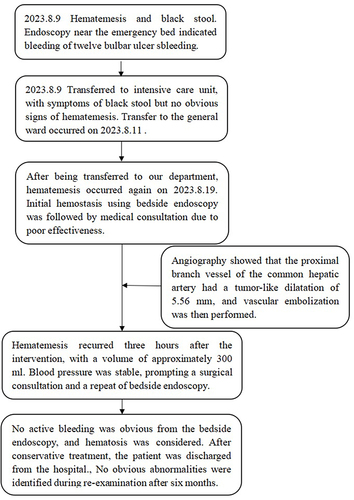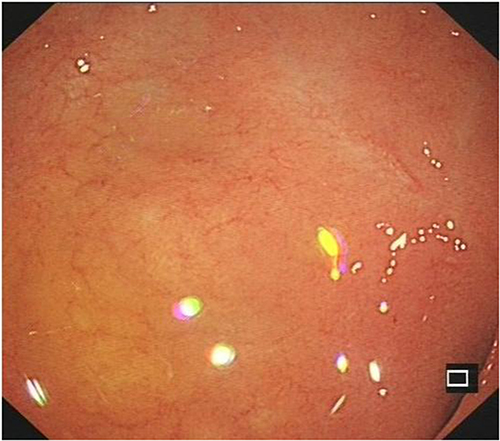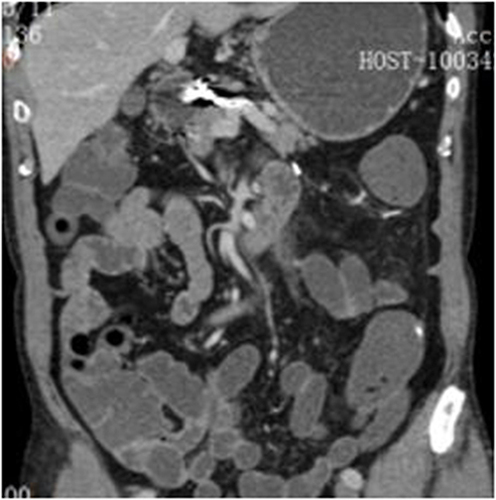Figures & data
Figure 1 Picture of the duodenal bulb showing an ulcer with a central naked thrombus head and active bleeding on the surface.
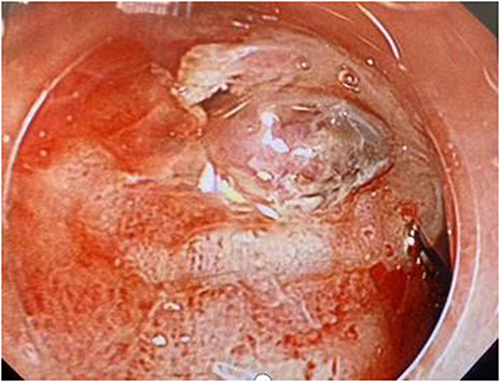
Figure 3 Angiography showing the presence of a distal tumor dilatation at the proximal branch of the common hepatic artery.
